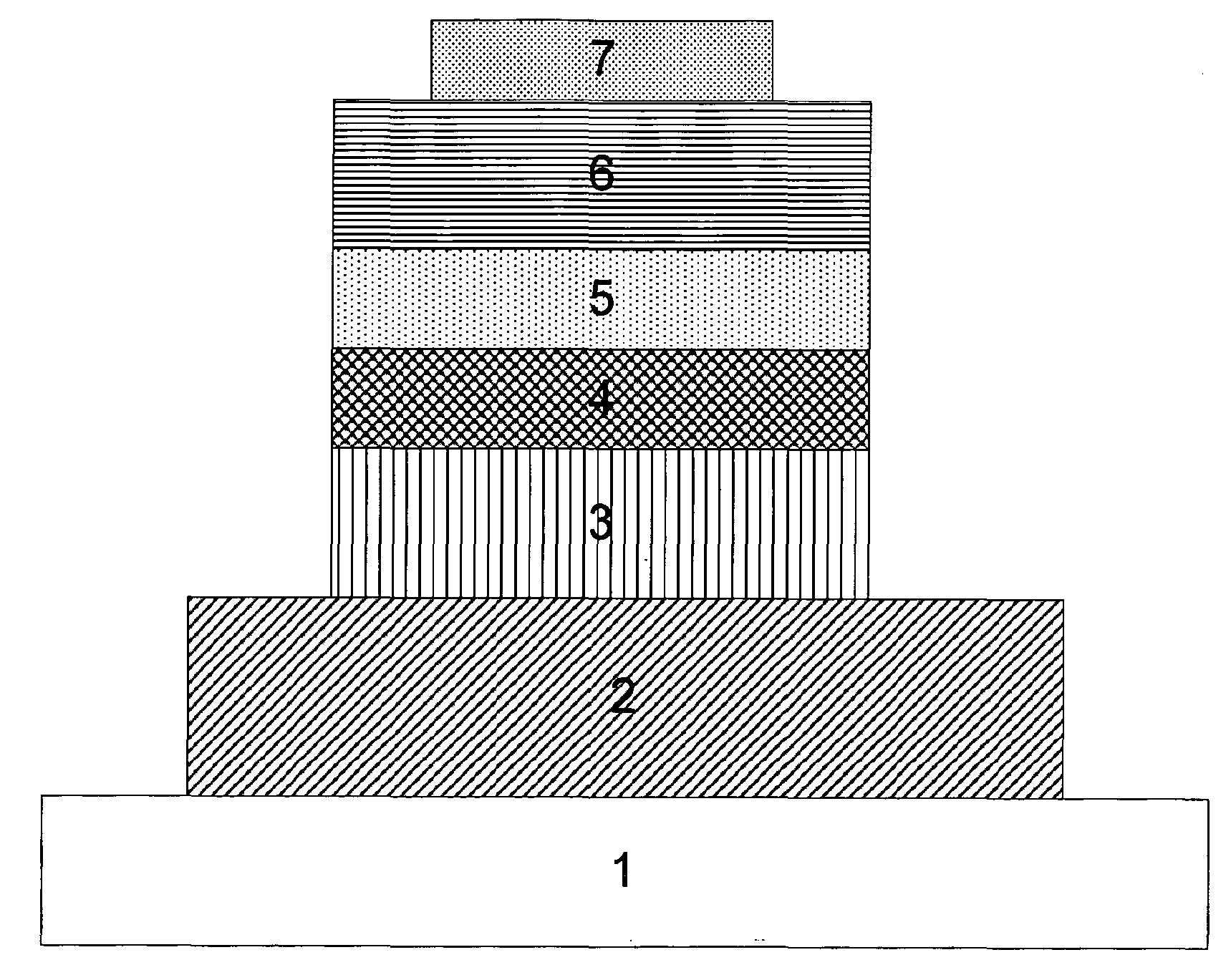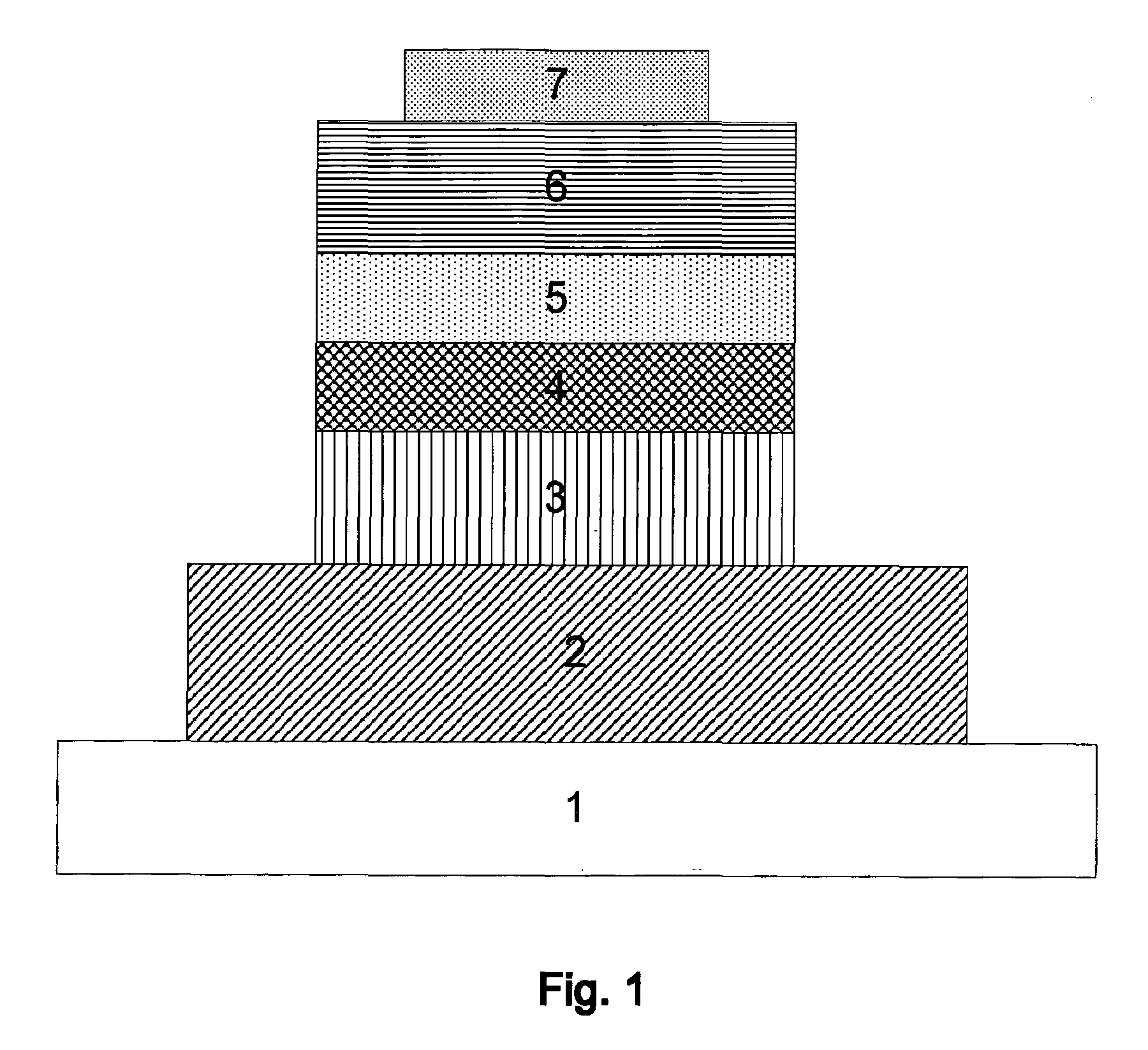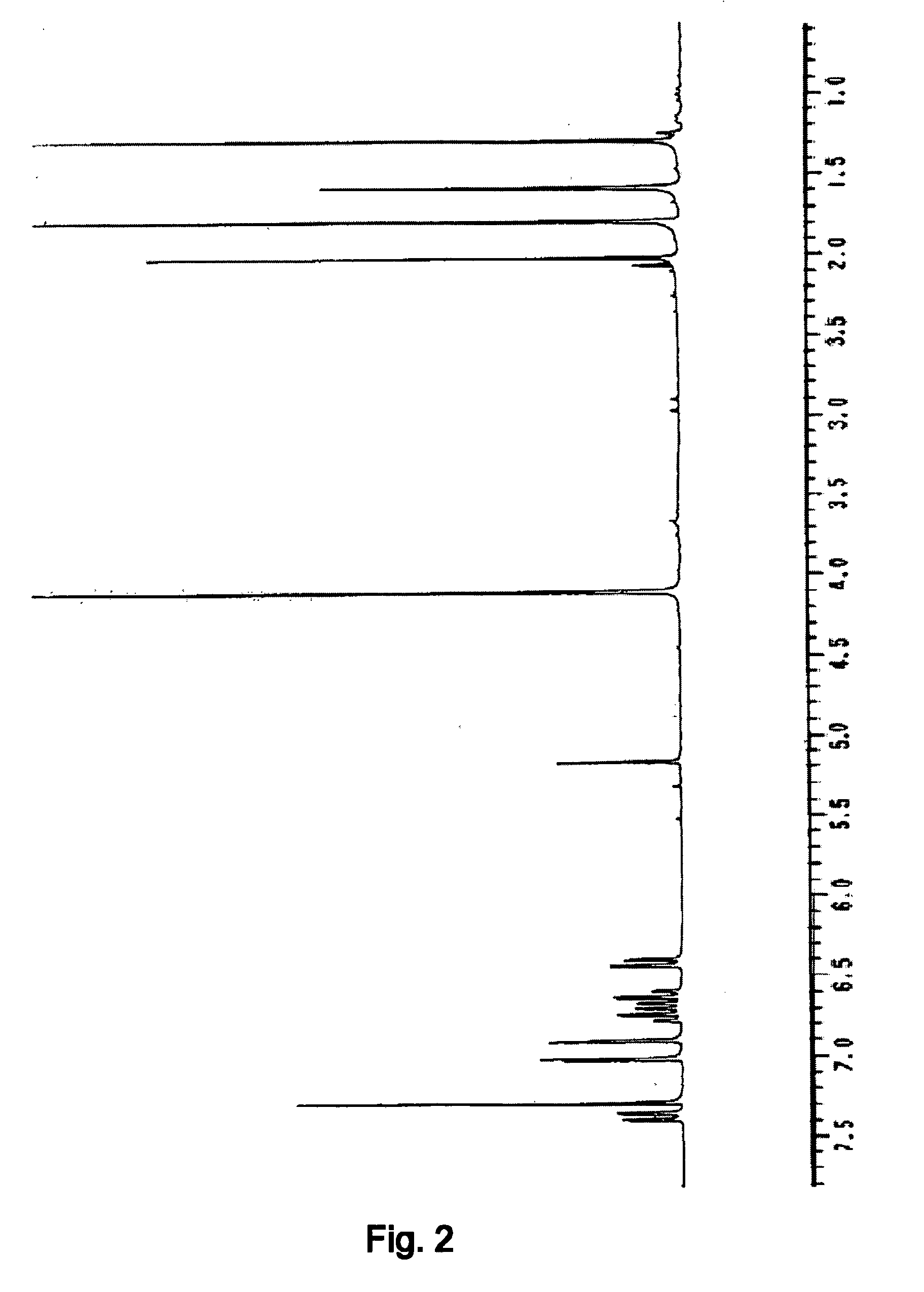Light-emitting material
a technology of light-emitting materials and materials, applied in the direction of discharge tubes/lamp details, luminescent screens for discharge tubes, organic chemistry, etc., can solve the problems of slow and inefficient luminescence, low efficiency of el, and large waste of energy contained in triplet states, so as to improve white emission efficiency, reduce moisture resistance, and reduce the effect of emission
- Summary
- Abstract
- Description
- Claims
- Application Information
AI Technical Summary
Benefits of technology
Problems solved by technology
Method used
Image
Examples
Embodiment Construction
Synthesis of the 1-methyl-2-phenyl-imidazole
[0083]
[0084]2-phenylimidazole (5 g) was taken into 150 ml of THF. To this solution 2.3 g of NaH were added. After refluxing for an hour under nitrogen 5.9 g of methyl iodide were added. The reaction mixture was refluxed for another 3 hours under nitrogen and then quenched with 5 ml of water. The solution was evaporated to dryness, and 200 ml of ethylacetate were added. The solution was washed with water and dried over MgSO4. The resulting product was column purified on a SiO2 using dichloromethane methane solvent mixture (95:5). The purified product is colourless oil. 1H NMR (CDCl3) δ 7.55 (2H, d, J=4.5 Hz), 7.34 (3H, dd J=5.3, 1.76), 7.01 (1H, d J=1.2 Hz), 6.85 (1H, d 1.2 Hz), 3.6 (3H, s).
Synthesis of [(1-methyl-2-phenyl-imidazole)2IrCl]2 Complex [Complex (VIII)]
[0085]
[0086]1-methyl-2-phenyl-imidazole (0.45 g 2.84 mmol) and IrCl3.3H2O (0.5 g 1.41 mmol) were refluxed overnight in a 3:1 mixture of methoxyethanol / H2O (100 ml). After being co...
PUM
| Property | Measurement | Unit |
|---|---|---|
| Efficiency | aaaaa | aaaaa |
Abstract
Description
Claims
Application Information
 Login to View More
Login to View More - R&D
- Intellectual Property
- Life Sciences
- Materials
- Tech Scout
- Unparalleled Data Quality
- Higher Quality Content
- 60% Fewer Hallucinations
Browse by: Latest US Patents, China's latest patents, Technical Efficacy Thesaurus, Application Domain, Technology Topic, Popular Technical Reports.
© 2025 PatSnap. All rights reserved.Legal|Privacy policy|Modern Slavery Act Transparency Statement|Sitemap|About US| Contact US: help@patsnap.com



